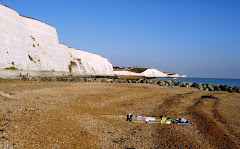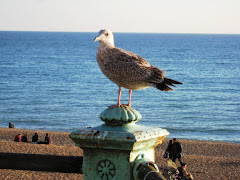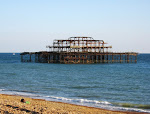 Kensington Gardens is one of my favourite destinations on a hot, sunny day in West London. It’s more intimate than Hyde Park, with lots of planting and trees, but also has plenty of other places of interest, such as the complex of Kensington Palace. It's one of the those superb green lungs which make central London bearable (or nearly bearable), particularly when it's hot and humid.
Kensington Gardens is one of my favourite destinations on a hot, sunny day in West London. It’s more intimate than Hyde Park, with lots of planting and trees, but also has plenty of other places of interest, such as the complex of Kensington Palace. It's one of the those superb green lungs which make central London bearable (or nearly bearable), particularly when it's hot and humid.Kensington Gardens is the more developed bit of the gardens to the west of the road (West Carriage Drive) that runs north-south through the park and across the Serpentine: it includes Kensington Palace, the Albert Memorial, the Round Pond and the Serpentine Gallery, but not the Diana Memorial Fountain. There are several cafes, which include Queen Anne's splendid Orangery. As well as being a classy place for lunch or tea, it's also an attractive historic building in its own right.
The wooded area is more thickly planted with trees than Hyde Park, but it also has lovely expanses of lawn, particularly around the ‘Round Pond’ (which is actually more oval). The pond itself is a great place to feed the ducks, and the grassy shores are popular for sunbathing, picnics and kite flying.
The bit I like the most is the Sunken Garden, which is technically part of Kensington Palace, but free for the public to look at. It was created in 1909 and is modelled on the Tudor Garden in Hampton Court, and is beautifully maintained, with a central pond and exquisite borders. It’s also a little haven for wildlife. Because the tourists feed them, the birds and squirrels have become phenomenally tame, so it’s a great place to get a snap of your kids feeding the squirrels or the family of Moorhens in residence.
The main paths are now quite busy highways for cyclists, (which is a good thing, in terms of getting people out of their cars, and it must bed safer than cycling on the the surrounding streets) but there are paths also reserved for pedestrians only. There are toilets at both Black Lion Gate (near Queensway), Palace Gate (on Kensington Road) and Mount Gate on West Carriage Drive.
At the north end is the Diana, Princess of Wales Memorial Playground, a lovely small park with all sorts of things to let children’s imagination run riot, like sculptures, teepees, a sensory garden, and the centrepiece - a large pirate ship set in a sea of sand.
For adults, there’s always the Serpentine Gallery, which runs regular exhibitions of art and sculpture, and occasionally concerts, and is small enough to pop in as you are walking past. A major new attraction at the gallery is the 2008 Pavilion. Designed by the world-famous architect Frank Gehry, it is a dramatic, angular structure with great panels of glass suspended at irregular angles by huge wooden beams, rather like the sails of some surrealist ship. Incredibly, it's Gehry's first project in the UK.
Strongly recommended on a hot, sunny day.



No comments:
Post a Comment